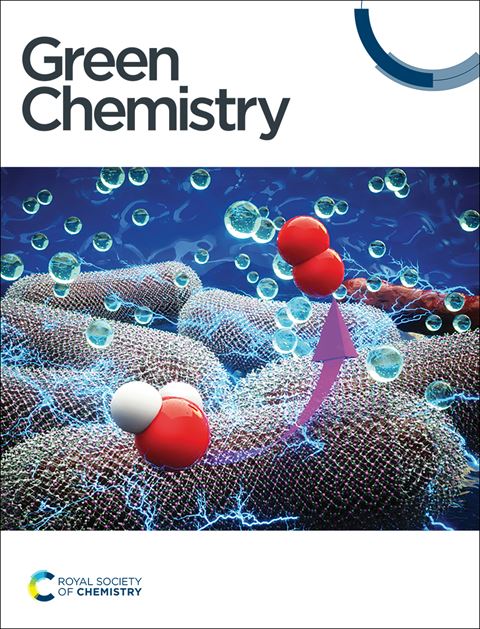Engineering budding yeast for the de novo synthesis of valuable flavanone derivatives†
IF 9.3
1区 化学
Q1 CHEMISTRY, MULTIDISCIPLINARY
引用次数: 0
Abstract
Flavonoids, such as homoeriodictyol derivatives, hold significant value in nutraceuticals, foods, and pharmaceuticals. Microbial synthesis of these products has emerged as a powerful approach due to its sustainability and environmental friendliness. However, constructing microbial cell factories of homoeriodictyol derivatives is often challenged by the lack of a biosynthesis pathway and the poor performance of endogenous metabolic networks. Here, an efficient Saccharomyces cerevisiae cell factory was designed and metabolically engineered for the de novo biosynthesis of homoeriodictyol 7-O-glucoside. Relieving the feedback inhibition and overexpressing the key enzymes successfully achieved the biosynthesis of homoeriodictyol with a titer of 174.0 mg L−1. Enzyme screening strategies explored missing glycosyltransferases and unveiled the homoeriodictyol 7-O-glucoside synthesis pathway for the first time. Blocking the glycoside hydrolysis pathway improved the titer of homoeriodictyol 7-O-glucoside by a substantial 7.2-fold. Metabolically regulating NADPH regeneration reduced the intermediate accumulation by 91.3%, while strengthening uridine diphosphate-glucose and substrate supply further boosted the homoeriodictyol 7-O-glucoside production. Altogether, these advancements led to a record homoeriodictyol 7-O-glucoside titer of 600.2 mg L−1 and a yield of 12.2 mg g−1 glucose. Overall, the versatile S. cerevisiae cell factory shows the potential to synthesize homoeriodictyol 7-O-glucoside, contributing to the green and sustainable production of natural products.

求助全文
约1分钟内获得全文
求助全文
来源期刊

Green Chemistry
化学-化学综合
CiteScore
16.10
自引率
7.10%
发文量
677
审稿时长
1.4 months
期刊介绍:
Green Chemistry is a journal that provides a unique forum for the publication of innovative research on the development of alternative green and sustainable technologies. The scope of Green Chemistry is based on the definition proposed by Anastas and Warner (Green Chemistry: Theory and Practice, P T Anastas and J C Warner, Oxford University Press, Oxford, 1998), which defines green chemistry as the utilisation of a set of principles that reduces or eliminates the use or generation of hazardous substances in the design, manufacture and application of chemical products. Green Chemistry aims to reduce the environmental impact of the chemical enterprise by developing a technology base that is inherently non-toxic to living things and the environment. The journal welcomes submissions on all aspects of research relating to this endeavor and publishes original and significant cutting-edge research that is likely to be of wide general appeal. For a work to be published, it must present a significant advance in green chemistry, including a comparison with existing methods and a demonstration of advantages over those methods.
 求助内容:
求助内容: 应助结果提醒方式:
应助结果提醒方式:


